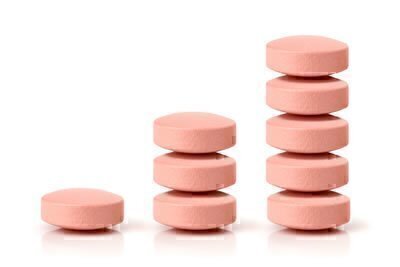Last updated March 2015
 If you have a pounding headache, nasty cold, upset stomach, bad cough, or—dare we say it?—all four at once, you probably don’t care much about finding the lowest priced over-the-counter medicines—you just want relief fast. But when you’re feeling well enough to care about cost, the results of our price survey of Washington area stores will interest you.
If you have a pounding headache, nasty cold, upset stomach, bad cough, or—dare we say it?—all four at once, you probably don’t care much about finding the lowest priced over-the-counter medicines—you just want relief fast. But when you’re feeling well enough to care about cost, the results of our price survey of Washington area stores will interest you.
Using a market basket of 24 over-the-counter drugs, Consumers' Checkbook’s mystery shoppers collected prices from area supermarkets, big-box discounters, membership warehouse clubs, chain drug stores, and a sample of independent drug stores, plus a few online stores. Because package sizes often differ from store to store (especially for warehouse clubs), our researchers recorded prices for the least expensive way to buy each item on a per-dose basis.
The price comparison scores reported on the table below show how the stores’ prices stack up. The scores indicate how each seller’s prices, on average, compare to the average price for all surveyed stores that carried the same mix of items. We adjusted the price comparison scores so that the average for all stores equals $100. A store with a score of $110 had prices 10 percent higher than the average; a score of $90 indicates the store’s prices were 10 percent lower than average.
As you can see, we found big overall store-to-store price differences: The lowest priced stores charge prices that are less than half of what the highest priced stores charge. If you regularly buy medicines that cost $.50 or more per pill or dose, these savings add up. For example, among stores we surveyed, per-pill prices for Claritin ranged from $.36 to $1.10; if you take on average one pill per day, you’d pay $131 to $402 per year, depending on where you buy it.
Here’s a rundown of the price winners and losers:
- Membership warehouse clubs Sam’s Club, BJ’s, and Costco offered by far the lowest prices. Sam’s Club’s prices were 41 percent lower than average, and BJ’s and Costco’s prices were each 37 percent lower than average. Keep in mind our price comparison scores don’t take into account these stores’ annual membership fees, which range from $45 to $55.
- Among non-warehouse-club stores, Walmart and Wegmans offered the lowest prices (22 percent lower than average).
- Among the big chains, CVS offered the highest prices (24 percent higher than average). Harris Teeter, Walgreens, Safeway, and Kmart each had prices that were more than 10 percent higher than the average.
- Unfortunately, if you want to support your local independent, you’ll likely pay a steep price: All three of the independent stores we shopped have price comparison scores
that are among the highest.
- Amazon also offered low prices, about 25 percent lower than average. You’ll save even more if you buy via its Subscribe & Save program, which offers a five to 15 percent discount on items scheduled for regular delivery. There are no requirements in terms of how often you have to schedule orders (you could schedule them for every six months), you can cancel or change your order at any time before it is shipped, and you can even skip deliveries. In other words, if you want to place just one order for a medicine with Amazon, you can sign up for Subscribe & Save, get a discount on that order, and cancel your subscription
afterward without penalty or fear of an over-full medicine cabinet. - Don’t assume that buying online always yields the best deals. Drugstore.com’s prices were only about average. And although the major pharmacy chains offer online regular-delivery deals in exchange for 10 to 20 percent discounts off their regular prices similar to Amazon’s subscription service, you’ll do better by using Amazon Subscribe & Save.
- As you can surmise from the warehouse clubs’ very low prices, buying in bulk usually pays off. But before you nab that bottle of 500 pills, keep in mind that most over-the-counter medicines have expiration dates after which manufacturers no longer guarantee their products’ effectiveness. If you don’t expect to use up the medicine before it expires, consider buying a smaller size.
- As with prescription medicine, consider generic alternatives, which are available for many products. We found that the handful of generic substitutes included in our market basket would save us 30 to 56 percent, on average, compared to their name-brand counterparts. The lowest priced sellers, including Amazon, all offer generic options for most over-the-counter medicines.
When using these price data, keep in mind that our mystery shoppers visited only one local store for each chain. Because store-to-store differences exist in both prices and inventory, the mix of prices at your local store may not be the same as at the stores we surveyed.
Over-the-Counter
|
Price comparison score (average = $100) |
|---|---|
| Local Stores | |
| Sam’s Club | $59 |
| BJ’s | $63 |
| Costco | $63 |
| Walmart | $78 |
| Wegmans | $78 |
| Target | $93 |
| Rite Aid | $100 |
| Shoppers Food Warehouse | $102 |
| Giant Food | $105 |
| Dollar General | $109 |
| Kmart | $111 |
| Safeway | $112 |
| Walgreens | $117 |
| Harris Teeter | $122 |
| Preston’s Pharmacy | $123 |
| CVS | $124 |
| Tschiffely Pharmacy | $135 |
| Apex Pharmacy | $137 |
| Online Stores | |
| Amazon.com Subscribe & Save | $68 |
| Amazon.com | $75 |
| Drugstore.com | $100 |
| *See text for a description of our survey and price comparison score. | |

